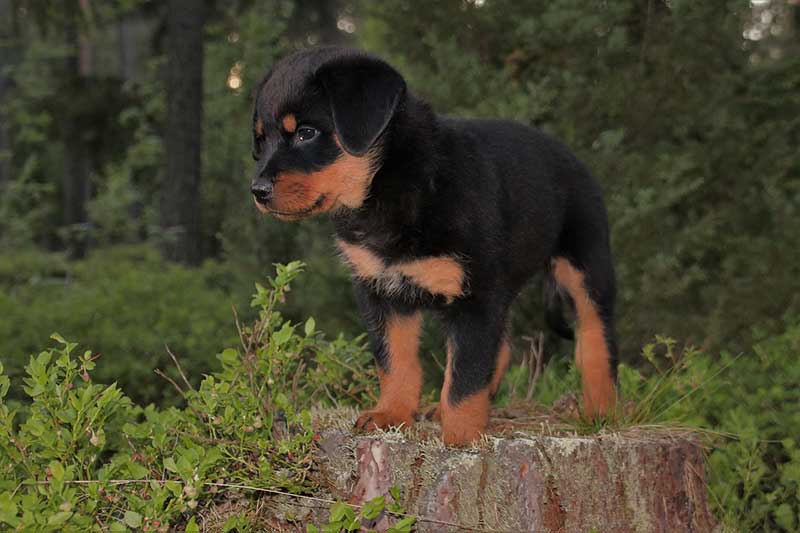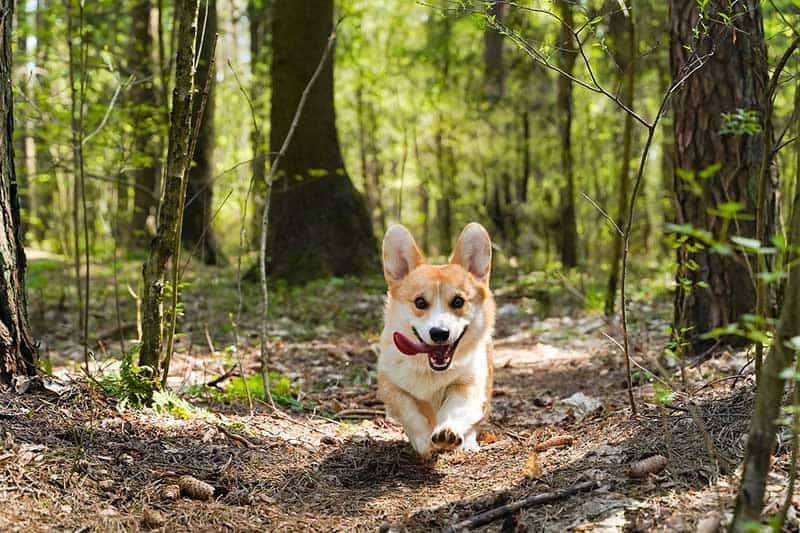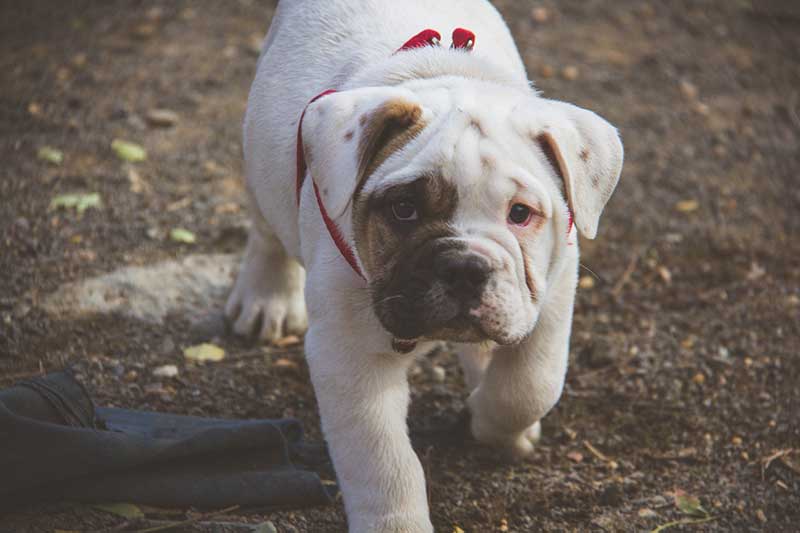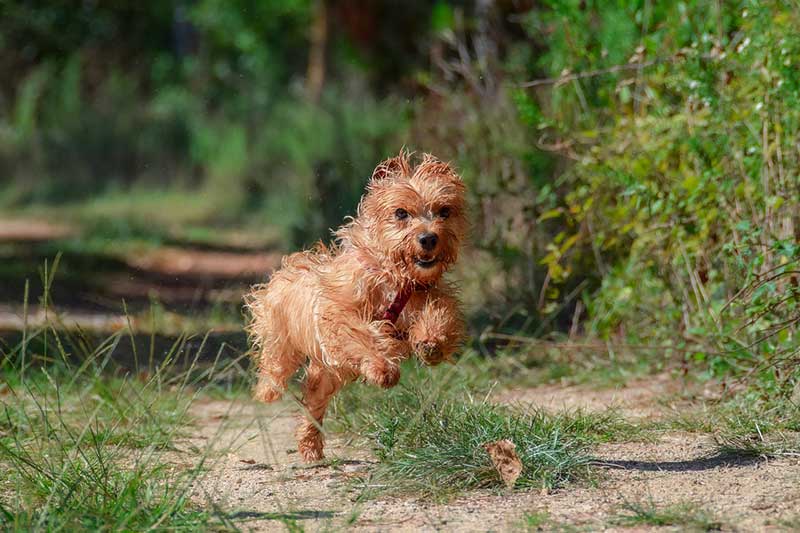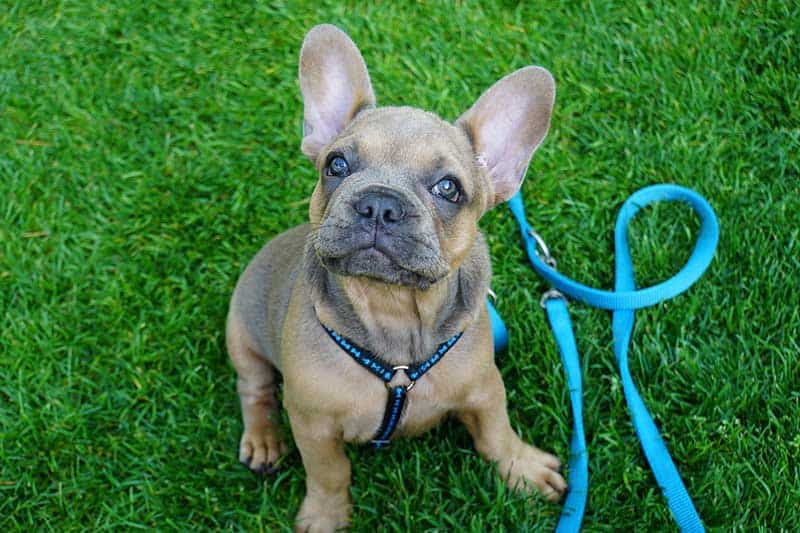Dogs and the great outdoors are a natural pairing. Going hiking with a puppy is a great way to bond, exercise, and give your buddy a buffet of intriguing smells. Having said that, there are some things you need to know about hiking with puppies before you get your furry friend out on the trail.
Done properly, hiking out with your puppy has some great benefits.
- There is socializing, as they meet all kinds of people and other dogs.
- There’s stimulation: paws on different surfaces, nose pulling in different scents.
- There is also mental stimulation, as they work out how to handle unfamiliar terrain.
As you watch your pup and his energetic play, you may be wondering when you can start taking him out for short hikes, and introducing him to the trails. Indeed – dogs and hiking are a natural fit, but there are some special considerations to learn about before you start the first trek.
Hiking with puppies – is it ok?
As a short answer: Yes! Any puppy will benefit from exercise.
As a responsible pet owner, you’ve probably figured out that your puppy will find a way to burn off energy and entertain themselves on their own. After a few losses of shoes or chair legs, the wise pet owner understands that it’s better to help provide some more structured exercise. (Unless you prefer that your hiking boots to be broken in by puppy teeth.)
The longer, more thorough answer is based on the age, size and breed of your puppy. As you’ll find out, even the larger breeds don’t benefit from long hikes started too soon. Let’s look at the Formula for Puppy Exercise:
5 minutes per day times the puppy’s age in months.
This means your 3-month-old needs 15 minutes a day of exercise. By 8 months, up to 40 minutes.
This does not mean you’ll be hiking 40 minutes a day with your 8-month old – that’s an overall figure for all exercise. As we said – too much too soon can actually have negative effects. It’s likely that your first several outings are going to be “Micro-Hikes”.
At what age can a puppy go hiking?
Your pup, as you’ve noticed, has several cases of “zoomies” a day. This is part of their natural energy cycle, and ties in with things like the time of day and when they ate. They’ll run non-stop for a few minutes, and then – boom! – out they go.
This will give you some insight into what they’re ready for, as far as hiking training. Think of each energy burst as the equivalent of a short hike or walk. You see where the “Micro-Hike” concept came from?
Depending on the breed and size of your pup, most dogs will be ready for 20-30 minutes of easygoing hikes at about 6 months of age. No rough terrain, no sustained power walks – just take it easy, even if your pup thinks she can keep going and going. The goal here is to make it fun, and allow for plenty of time for sniffing and fun and exploration.
Dangers and health risks to hiking with puppies
Growth Plates – They’re not what you feed your puppy on
Veterinarians have gotten a lot more knowledgeable about how dog bones mature. Even though it’s not obvious on the surface, your pup’s bones are still growing and hardening long after you think they are – up to 18 months, for the larger breeds. The long bones of their legs need protection until that time.
This is where Growth Plates come in. Growth plates are soft areas of developing cartilage tissue found by the ends of the dog’s long bones. Growth takes place from the ends of the bones, and as your pup gets older, this cartilage will harden into bone. Until then, it’s easy to injure, fracture, and even deform.
Take it easy, and your risk of injury will be minimal.
Footpad injuries
One of the joys of puppies is their soft paws. However, just like you at the beginning of every summer, they have tender feet. There are things you can do to protect their feet when hiking. Give them time to toughen up with your short walks, and don’t start out on rough terrain. Some types of gravel shards can literally be as sharp as a knife edge.
Be aware of the temperature of the ground, too. It’s easy to burn the paw pads of any dog, much less a puppy.
Bottom line: If you wouldn’t walk on it in bare feet, don’t let your puppy, either. You may want to look at dog boots, and brush up on first aid for pad injuries.
Training your puppy to hike – 5 tips
We’ve covered the basics on when your puppy can start learning to hike, let’s look at the process of how to work with your dog and teach them the basics of good behavior, as well as making sure they’re ready for time on the trail.
1. Work with their age and abilities
It’s really never too early to begin working with your puppy. Even playing, if done properly, can be a time to learn and bond. However, it takes time for them to be able to hold thoughts for very long. Just like human children, they have to navigate a world where they’re learning to potty at the right times, learn your language,
(FUN FACT: Did you know the average dog understands about 165 words?)
and go through a lot of teething. Their heads are pretty full of new information every day, but with consistency, you can start implementing some stepping stones to further training.
- In short doses, you can help your puppy learn to respond to her name, and focus on you. Use those moments to hold her attention and encourage her to come to you and follow you.
- If you’re doing short walks outside, let them get used to the fact that you will be stopping to pick up after them when they’ve pottied. The last thing you need on the trail is a dog who starts running while you’re still bent over with a plastic bag!
- Young puppies can also learn “Off”. Even on short walks, it’s good to have this command handy, to help remind them not to jump on people or to leave something alone.
2. Leash training
Basic good manners on a leash are essential before you hit the trail. Whether you learn these on your own, or take some basic puppy obedience classes, there are some skills that are a must.
3. Knowing “Stay” or “Wait”
These are tough ones for some dogs, but you need to have these down cold for their safety. Whether it’s jumping out of a car, or not proceeding on a dangerous piece of trail, your dog needs to understand these commands. Bonus: You will learn to love these commands. They are true life-changers, when it comes to making life with your dog more enjoyable.
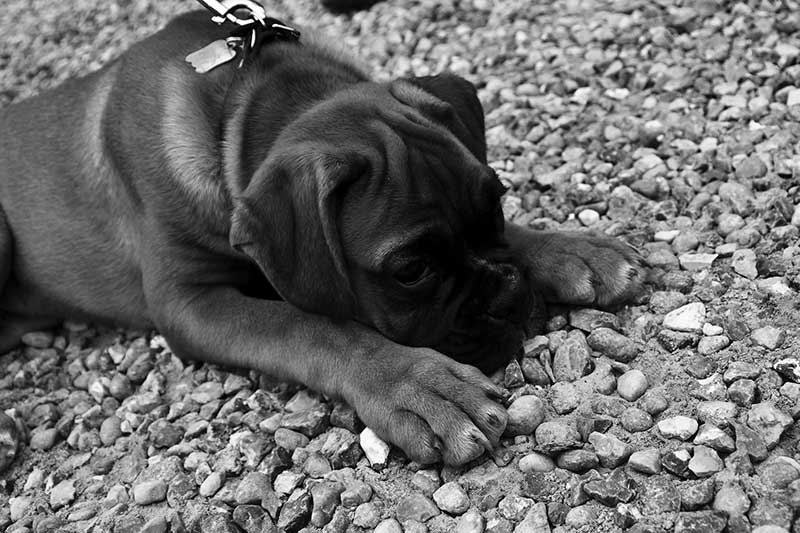
4. Trying out their Dog Pack & Boots
If you’ll be using a dog pack, having your older pup wear it around the house and on short walks will help them get used to the idea. You can gradually increase the weight as he reaches full growth. The maximum, once you’re seasoned hikers, will be no more than 25% of his body weight. The same applies to their boots. They’ll take some time to get used to – and you’ll always have those videos of her trying to walk in them for the first time!
Recommended hiking pack for dogs:
5. Conditioning
If you are following the guidelines we previously listed, you will have a dog who is ready for short hikes of about 20-30 minutes, depending on their age. If you have any doubts, check with your veterinarian. Remember – just because your dog is still willing to go on after that time, their bones aren’t ready for it, yet.
Other things to consider when taking pups on a hike
When you’re ready to head out on the trail, you’ll want to have a few details covered. From vaccinations to first aid to the proper gear, make sure you’re ready for whatever pops up.
1. Vaccinations
Be ready for the great outdoors by making sure your pup’s vaccinations are up to date. He’ll be encountering other dogs, pests, and other disease transmitters. Chat with your vet about any precautions you should take for your area.
2. First aid & Health
Just like for yourself, you’ll want to be prepared for emergencies. You can pick up a basic first aid kit at pet stores.
-
- Be aware of water dangers, and encourage your pup to only drink water you’ve packed in, if it’s a concern.
- Bring along enough food and water.
- Check closely for ticks or foxtails after the hike is done.
And, of course: Be a conscientious hiker, and leave no trace behind. Be sure to bring along a good supply of pick-up bags for any dog waste, and pack it out with you.
And remember – keep the first hikes fun! They’re a perfect time to bond with your dog, reinforce training, and stimulate their brains, in addition to all those other benefits. Especially on the first hikes, take it slow and allow your pup plenty of moments to stop and enjoy the new smells and sights. Tell them often how good they are! Don’t push too hard, and watch your pup closely afterward for any signs of limping or pain.
3. Hiking gear for puppies
You have trail gear – your pup will have trail gear. You’ll need to make sure that you have the right equipment for your buddy. Here are some helpful items that will make your first trips out on the trail go more smoothly.
1. Dog Gear Pouch
For easy access to treats, plastic bags, and other trail training essentials, you’ll want a sturdy bag that you can wear at your waist for hands-free puppy wrangling. This one on Amazon should do the trick.
2. Dog Hiking Boots
For protecting those tender puppy paw pads on harsh terrain, you’ll want to get a set of proper dog boots. They’ll protect his feet against heat, cold, and objects that could cut his feet. These dog hiking boots come in a variety of sizes and have great reviews on Amazon.
3. Puppy Hiking Harness
For those training runs, you’ll want a good harness. Look for something soft, comfortable and durable. Harnesses are perfect for keeping pressure off your pup’s neck, preventing choking, and for giving an extra handhold in case of an emergency. Here’s a popular puppy harness on Amazon you may want to check out.
Best dog breeds for hiking
Although all dogs can enjoy hiking, there are some breeds who are particularly suited to it. First, let’s look at some of the breeds and types that may enjoy hiking, but who will need special considerations.
Your Bulldog may love the idea of going out on the trail, but all dogs with short noses – such as Pugs, Bulldogs, Boston Terriers, Pekingese, Boxers, Shih Tzus and French Bulldogs – have reduced heat tolerance. It’s best to keep puppies with these breeds in their background off the trail, unless it’s a very short one in cooler weather.
As for other breeds, there are factors that make some happier hikers. For some, it’s energy levels, for some, it’s practically hardwired into their DNA, and for others, it’s part of keeping their busy brains stimulated. So, whether you have a purebred or a motley mix of mutts in your puppy’s breeding, here are some of the Happy Hikers of the dog world.
The Born to Run Breeds
These are breeds that were bred to cover long distances efficiently – and tend to look it, with long legs. There may be a few surprises here: not everyone knows that Dalmatians were designed to run for miles and miles alongside horse-drawn carriages, for example.
- Siberian Huskies and Malamutes
- Rhodesian Ridgeback
- Vizsla
- Weimaraner
- Dalmatian
The Workers
These dogs were used for herding and other activities that give them a natural drive to cover ground and hang out with their people. This makes them some of the best dogs for hiking.
- Doberman Pinschers
- Welsh and Pembroke Welsh Corgis
- Australian Shepherds
- Bernese Mountain Dogs
- Beagles
- Schnauzers
- Great Pyrenees
- Labrador Retrievers
The Over Achievers
Some breeds have both a high energy drive and an intellect that really benefits from the stimulation that hiking can offer. This category of dogs also make great hiking companions.
- Border Collie
- German Shepherd
- Australian Cattle Dogs
- German Shorthaired Pointer
- Bluetick Coonhounds
The Terrier Troopers
Terriers were bred to be small hunters. They have a focus and energy level that can make them a blast as a hiking partner.
- Jack Russell Terriers
- Bull Terriers
- Tibetan Terriers
- Cairn Terriers
- Airedale Terriers
By no means is this an exhaustive list; and don’t forget about mixed breeds, who can be some of the hardiest of all. But, if you have one of these breeds, you may find that they are naturals at taking to trail life.
Wrap Up
If your puppy is too young for hiking, don’t rush him. In the mean time consider sprucing up your backyard for your puppy so he can get plenty of exercise and get used to the leash at home before you guys hit the trails together.
